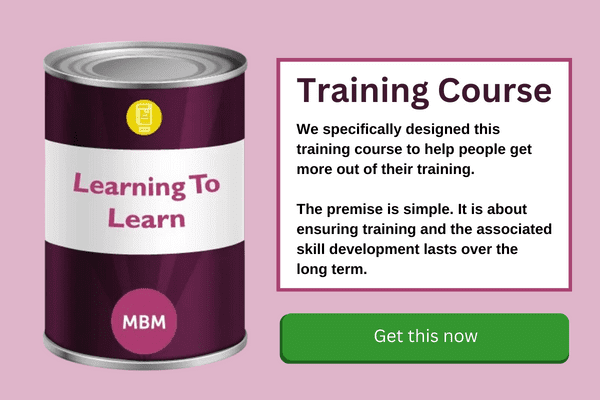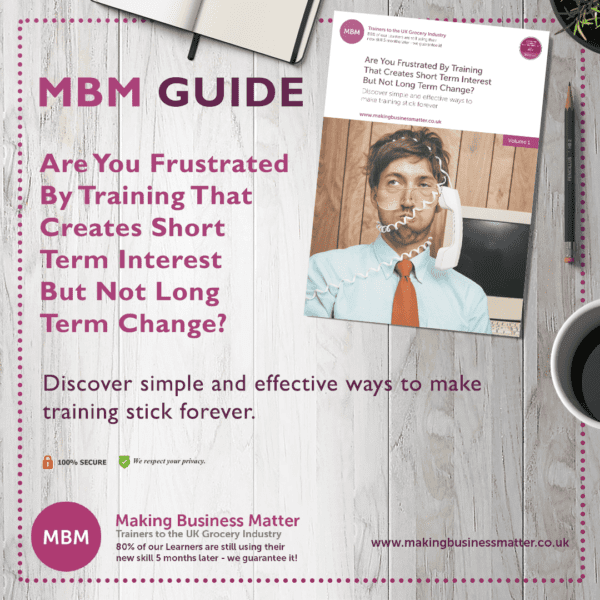What is the 70:20:10 Model?
The 70 20 10 learning model (also written 70:20:10) is a guiding metaphor for all development activities. It refers to recommended percentages of how we should learn to achieve a better ‘learning mix’, also known as ‘blended learning’:
- 70% is informal, on the job, experience-based, stretch projects, and practice.
- 20% is coaching, mentoring, and developing through others.
- 10% is formal learning interventions and structured courses.
Read more about the 70 20 10 learning model.

What are Learning Activities for Each of the 70 20 10 Parts?
For the 70 – Learning Through Doing – Known as ‘On-the-Job Learning’ or ‘Experiential Learning’:
1-10
- 1. Present the learnings to your team in your team meeting.
- 2. Write an article for this blog sharing your learnings.
- 3. Deputise for your manager in meetings.
- 4. Take part in a podcast to share what you have learnt.
- 5. Ask your manager to delegate new work to you.
- 6. Take on projects that utilise the new skill or behaviour.
- 7. Be a change champion for a specific initiative that uses your newfound learning.
- 8. Volunteer to speak at an external event about your journey of learning.
- 9. Share with your colleagues that you are becoming a subject matter expert because this will test your knowledge/skill.
Sticky Learning ® is 7 times more effective than 1-day training courses. Plus, you will get a Chain of Evidence proving your Return on Investment. Discover soft skills training that changes behaviours long term.

10-
- 10. Become a team member in a project where you have no knowledge and you can demonstrate your new knowledge.
- 11. Become an internal leader on this topic.
- 12. Network and interact with the senior leadership team, sharing what you have learnt.
- 13. Become a mentor for others.
- 14. Get seconded for a temporary time in another department, to share best practices.
- 15. Create a Linkedin group discussing your new behaviour.
- 16. Identify 3 ways to apply your learnings in your business.
- 17. Shadow a colleague to observe them doing this behaviour well.
- 18. Apply your new learning in real situations.
- 19. Use feedback to improve further.
- 20. Take on new work and solve problems within the role.
21-33
- 21. Introduce a new technique.
- 22. Champion and/or manage changes.
- 23. Gain exposure to other departments/roles.
- 24. Work with a recognised expert.
- 25. Take part in a project or working group.
- 26. Read a book on this skill.
- 27. Research your topic further, to understand your new behaviours even more.
- 28. Re-write the standards/competency framework for this new behaviour.
- 29. Create a Powerpoint presentation for your company’s intranet.
- 30. Carry out interviews, where you can explore this learning.
- 31. Create a mnemonic for others to understand this learning better.
- 32. Play an active role in professional/industry associations.
- 33. Participate in facilitated group discussion.

- Be coached regularly.
- Receive feedback from others on your performance with this behaviour.
- Buddy up with a co-worker for sharing experiences and knowledge.
- Use the appraisal process to explore this skill further.
- Complete a personal development plan with your line manager.
- Get mentored by a senior manager.
- Knowledge share with others – what works, what doesn’t etc.
- Learn from experts on this topic.
- Use 180/360 degree feedback as a tool for improvement.
- Follow and comment on leading blogs.
- As Stephen Covey, the author of ‘The 7 Habits of Highly Effective People’, said, “If you get, give. If you learn, teach”. We know that if you teach someone else what you have learnt, and particularly within 24 hours, you are much more likely to retain what you have learnt.
- Download whitepapers and research papers.
- Watch youtube videos.
- Listen to podcasts.
- Use 1-to-1 meetings with your line manager to discuss the new behaviour.
- Engage in reverse mentoring.
- Teach colleagues how to do a component of their jobs.
- Establish or join online professional communities.
- Start your own blog.
- Curate and share what you’re doing with colleagues.
- Build internal and external personal networks/contacts.
- Engage on social media.
- Understand the Forgetting Curve in this 1-minute video because you will know the importance of the 70 20 10 model for your learning.
For the 10 – Learning Through Courses – Known as ‘Formal Learning’:

- Attend training courses.
- Attend conferences and events.
- Take part in live and watch recorded webinars.
- Attend distance learning courses.
- Take eLearning courses.
- Experience training simulations.
- Gain a professional qualification or accreditation.
- Aim to get a certification, like CIPD.
- Get a formal education, e.g. University, Business School.
- Reading academic papers, books, and research.
A Very Useful Guide to Download
Download this guide – ‘Are You Frustrated By Training That Creates Short Term Interest But Not Long Term Change? Discover simple and effective ways to make training stick forever‘.





